- Home
- About Us
- Advanced Testing
- Nutrition & Self-Care
- Further Learning
- New Member Info
- Contact
About 70% of diabetics will eventually die of heart disease and 15% from stroke. (REF 2) The number of Americans with diabetes and pre-diabetes is rapidly increasing. Statistics show that 34% of Americans over the age of 18 are already pre-diabetic so we actually have an epidemic on our hands. (REF 3)
Even pre-diabetics (patient’s with only slight elevations in blood sugars) are often already victims to arterial inflammation and plaque growth from the disease. Studies have shown that 10% of these patients already have permanent damage such as retinopathy (eye damage) or neuropathy (nerve damage) from microvascular complications. (REF 6)

Because of these known health implications, we take pre-diabetes seriously and target the disease as early as possible (often with both lifestyle and medical interventions). Read more about insulin resistance and pre-diabetes HERE.
There are several tests that can help establish a proper diagnosis. However, due to different types of metabolic defects, one test might be normal while another is abnormal . . . so comprehensive testing is warranted for proper assessment of pre-diabetes.

A fasting blood sugar of 101-125 is considered pre-diabetic. A value of 126 or above is considered diabetic.
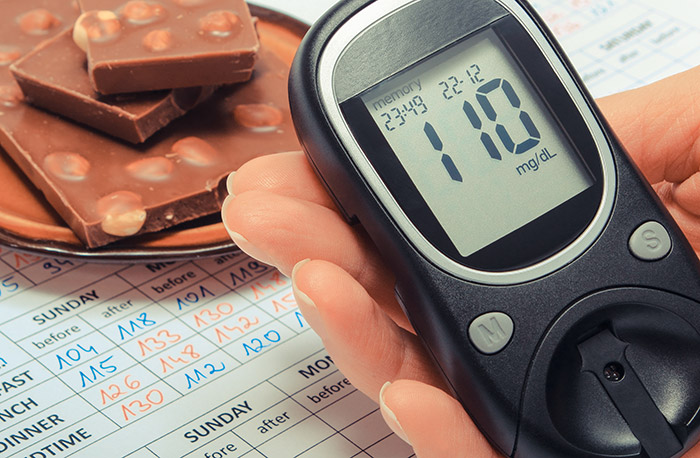
This test measures the concentration of glucose attached to the hemoglobin in red blood cells. It assesses the average amount of glucose in the blood over the last two to three months. A Ha1c of 5.7 – 6.4 is considered pre-diabetes and a Ha1c of 6.5 or higher is considered diabetes.

This test is routinely administered to pregnant women to assess whether they have gestational diabetes, so many women have already had it done. To perform this test, the patient goes to the lab fasting (8-12 hours without anything but water) and drinks a 75-gram glucose drink. The patient's fasting blood sugar levels and their levels one and two hours later are all drawn to assess how well their pancreas can handle this glucose load. Patients can have normal fasting blood sugars but elevated post-prandial levels, indicating there is still a problem that needs to be addressed.
Historically the American Diabetic Association (ADA) has defined a 2hrgtt level of less than 140 mg/dL as “normal,” a level of 140-199 as pre-diabetes, and a level above 200 as diabetes.
However, Dr. Ralph Defronzo, a world expert in diabetes, has published excellent data in peer-reviewed journals indicating that once the one-hour sugar levels exceed 125 mg/dL, or the two-hour sugar reading reaches 120 mg/dL or higher, at least 60 percent of the beta cells in the pancreas (the cells that make insulin) are non-functioning . . . so this patient should be considered pre-diabetic. Once 90 percent are fatigued (also known as beta cell function loss), the patient is a diabetic. If the one-hour glucose exceeds 150 mg/dL, or the two-hour goes above 159, then this person is 13 times more likely than the average person to progress to diabetes in the next seven to eight years.

Dr. Defronzo’s extensive research clearly demonstrates we are diagnosing diabetes too late because at the initial point of diagnosis, patients have already lost 90% of their beta cell function in their pancreas. This is why so many type 2 diabetic patients progress to the point of requiring insulin. Dr. Defronzo is emphatic that if we want to beat this disease and save more lives, we must treat patients in the pre-diabetic stage.

Adiponectin is a cardioprotective hormone produced by the adipocytes (fat cells) that helps defend against heart disease and diabetes. It has potent anti-inflammatory and anti-atherogenic effects. If a patient’s adiponectin level is low, they have a three-fold increased risk of metabolic syndrome and a two-fold increased incidence of coronary artery disease. Pioglitazone (Actos) seems to be particularly effective at raising adiponectin levels.
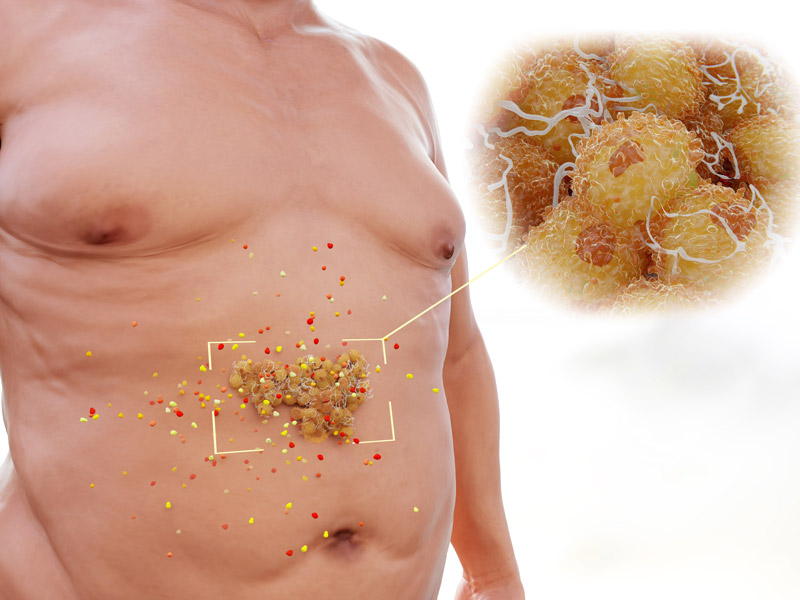
Insulin is a hormone released from the pancreas that is responsible for the transportation and storage of glucose in the cells. A fasting insulin level may be used in conjunction with the oral glucose tolerance test (2hrgtt) to assess pancreatic function.
Pancreatic beta cells make insulin, which regulate glucose levels in the blood. However, insulin levels will go up much earlier than blood sugars do, indicating there is a metabolic problem. When a patient’s fasting insulin level is elevated, this indicates the pancreas is overworking . . . and burning out beta cells in the process (even when blood sugars remain in normal range). This defect is called insulin resistance. With insulin resistance, the cells become “resistant” to insulin, meaning they have a reduced ability to absorb and utilize blood glucose for energy. As a result, the body requires higher insulin levels to function.
Even patients who do not meet the diagnostic criteria for pre-diabetes, may still have insulin resistance and be at increased cardiovascular risk. The presence of insulin resistance indicates a higher risk of developing: type 2 diabetes, high blood pressure, high cholesterol, and heart disease. (REF 1)
HOMA –IR is a marker of how well the body can process sugar (basically a marker of insulin resistance and pancreatic beta cell function).
The standard measure of insulin resistance is the homeostasis model, based on both fasting insulin and fasting glucose level. Also called Homeostasis Model of Insulin Resistance (HOMA-IR).
The presence of insulin resistance (a value > 3.0) indicates a high risk of developing: coronary heart disease, stroke, peripheral vascular disease, type 2 diabetes mellitus, hypertension, and hyperlipidemia. (REF 1)
GSP is the amount of glucose attached to total serum proteins - it indicates the average amount of glucose in the blood over the previous two to three weeks (as opposed to Ha1c which gives an average of the last two to three months).

First and foremost, a patient’s lifestyle should be addressed. Diet, exercise, and weight loss can have an incredible benefit in lowering blood sugars. The Diabetes Prevention Program (a study of over 3,200 pre-diabetics) showed that adding 150 minutes of exercise per week, and achieving just a 7% weight loss, could reduce the incidence of Type 2 Diabetes by 58%. (REF 1, 19) The real question is whether patients can maintain these lifestyle changes long-term, without reverting back to their old habits. If pre-diabetic patients are willing to commit to an ongoing lifestyle of healthier eating and living, then they may be able to avoid medication. But this will also depend on how early the pre-diabetes is diagnosed (and the severity of their beta cell dysfunction).

Most medical practitioners prescribe metformin (Glucophage) to treat the pre-diabetic patient. Metformin works mainly by decreasing glucose production in the liver, but it does not help as much with insulin resistance in the muscle (the initial metabolic defect in pre-diabetes). (REF 2) In addition, metformin can have many gastrointestinal side effects, and it can interfere with the body’s methylation processes (the ability to break down and absorb certain vitamins). Even though it is the most common choice by most practitioners, it is not my initial choice for treatment.
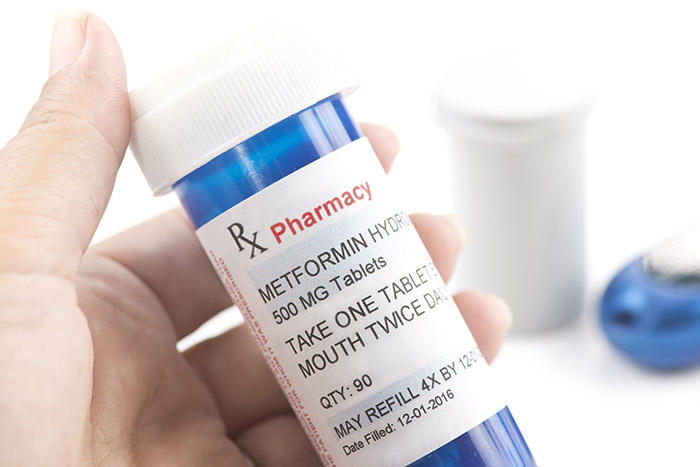
According to Dr. Ralph Defronzo’s esteemed research, there are at least eight different pathways in the body that are impaired by diabetes. (REF 6) By utilizing medications that target multiple organs at once, we can treat this disease more effectively. For this reason, I often start patients on a GLP-1 receptor agonist and a thiazolidinedione. With this approach, you target seven out of the eight dysfunctions. I will later add an SGLT2 inhibitor if blood sugars remain high and I need to target that eighth pathway. These are the three classes of diabetic medications (GLP-1 receptor agonists, thiazolidinediones, and SGLT2 inhibitors) that have been proven to reduce CV mortality in diabetics, so they have cardioprotective benefits beyond just lowering blood sugars.

GLP-1 receptor agonists can lower Apo B, lower blood pressure, and improve arterial inflammation. (REF 29)
More importantly, long-acting GLP-1 agonists reduce mortality in patients with Type 2 Diabetes. In the Leader trial (a study of 9,000 diabetic patients with high CV risk), liraglutide (Victoza) reduced CV risk (nonfatal myocardial infarction, or nonfatal stroke) by 13%, and reduced CV death by 22%. (REF 22) In the Rewind trial, dulaglutide (Trulicity) reduced major adverse cardiac events by 12%. (REF 24) And last but not least, is the Sustain 6 trial, where semaglutide (Ozempic) reduced major CV events and CV death by 26% in adults with Type 2 Diabetes who were at high CV risk. (REF 22, 23, 24) In the Pioneer 6 trial, this same medication (semaglutide) in its new oral form (Rybelsus), reduced major adverse cardiac events by 21%. (REF 24)
GLP-1 receptor agonists target multiple pathways affected by diabetes at once so they can help shut the disease down at its many sources. (REF 21) This class of medication works primarily by stimulating the pancreas to release insulin only when needed, so patients are not at increased risk of developing hypoglycemia (low blood sugars). In addition, this class of medications can increase satiety (by decreasing the hunger hormone ghrelin, and slowing gastric emptying), so they typically help patients lose weight. (REF 30)
Pioglitazone has gotten a bad reputation in the media, and as a result, fewer providers are prescribing the medication. However, for those willing to take a deeper look, pioglitazone has some incredible data and health benefits.
The Proactive Study in 2005 (5,238 patients with type 2 diabetes and evidence of macrovascular disease) was a prospective trial that was supposed to last five years, but was stopped after three years because they found a significant reduction in cardiovascular death in the patients taking Actos (a 16% decrease in heart attacks after three years and a 73% decrease in strokes). Actos achieved statistically significant results in this study, showing a reduction in all-cause mortality, non-fatal MI (heart attack), and stroke. (REF 7) However, since the primary endpoint of the study was improvement in peripheral vascular disease, Actos did not get an indication for reduction in stroke and non-fatal MI (and Actos was about to go generic so no one was going to spend the money on another study for it to get this indication).
In the Proactive study, the overall safety and tolerability of pioglitazone was very good. However, because pioglitazone can cause swelling, it can worsen congestive heart failure (CHF) in certain patients. In the Proactive Study, 6% of those in the pioglitazone group and 4% of those in the placebo group were admitted to the hospital with heart failure, but mortality rates from heart failure did not differ between the groups. (REF 7) Interestingly, a meta-analysis of nearly 5,000 patients on Actos showed NO increased risk of CHF in those taking the medication. (REF 27)

There are other diabetic medications that have shown to increase CHF risk in trials (the DPP-4 inhibitor Saxagliptin), but this risk has not come into the forefront of concern – Actos seems to be the only one in the limelight. (REF 31) In addition, certain vasodilating blood pressure medications, anti-inflammatory medications, and even some antidepressants, can worsen CHF in similar ways. (REF 25, 26) The key is using these medications in the appropriate patient, at the appropriate doses. But we should not toss out the whole class of thiazolidinediones because a subset of patients may not tolerate them. Pioglitazone is contraindicated in individuals with class three or four heart failure (patients with marked limitation of physical activity due to discomfort or those with symptoms at rest). However, pioglitazone is effective and well-tolerated when used early in the disease process, before the arteries lose their healthy elasticity and stiffen.
Diabetics have 40% more bladder cancer than non-diabetics, (REF 11) and smokers are 4-7x more likely to get bladder cancer than non-smokers . . . but taking Actos does NOT increase a patient’s risk of bladder cancer.. (REF 12)
A comprehensive literature search was conducted through electronic databases, as well as registries for data of clinical trials, to identify studies that investigate the effect of pioglitazone on bladder cancer. Fourteen studies were included in the meta-analysis. The data affirmed that no connection exists between use of pioglitazone and the risk of bladder malignancy. (REF 10)
When choosing the best medication for pre-diabetics, insulin resistance in the muscles (the inability to utilize glucose in the cells) should be a primary target of therapy, and pioglitazone (Actos) does a better job at treating insulin resistance than metformin. In addition, pioglitazone raises adiponectin (a cardioprotective hormone) (REF 5), decreases inflammation (REF 3), reduces blood pressure (REF 8), and improves many lipid parameters like HDL, LDL-P, and triglycerides. (REF 4) Metformin may help the patient lose weight, but it does not reduce arterial inflammation and does offer any CV benefit in non-diabetics. (REF 17, 18)
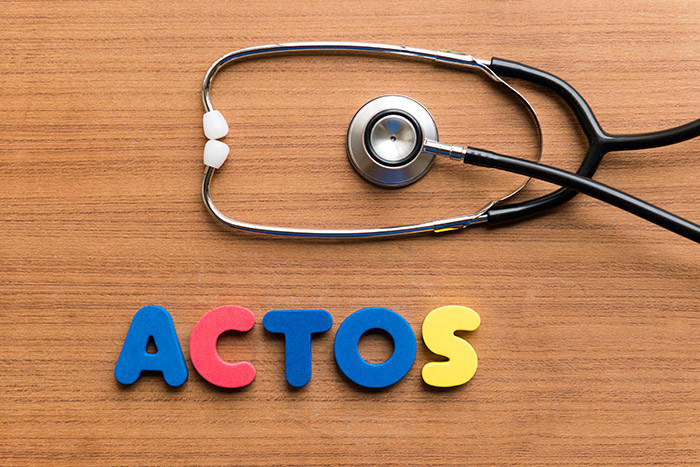
The ACT NOW study showed that Actos could slow the progression of carotid atherosclerosis (plaque in the large arteries in the neck) in pre-diabetic patients. (REF 13, 20) After just six months of use, Actos has also been shown to regress coronary artery disease (decrease plaque burden) in pre-diabetics, while also reducing inflammation and improving endothelial function. (REF 14)
Outside of CHF, studies have shown incredible CV benefits with Actos – patients taking it have a 30-40% reduction in heart attacks and strokes. (REF 9, 27) A recent (2019) post hoc analysis of nearly 1,500 patients on pioglitazone confirmed these tremendous CV benefits. (REF 15)

Actos has been shown to reduce the risk of dementia by 48%! (REF 28) There are ongoing trials assessing this potential benefit of pioglitazone in preventing dementia.
Finally, pioglitazone is the only medicine that has ever been shown to have a positive effect on non-alcoholic steatohepatitis (NASH), or “fatty liver.” (REF 16) In a study of over 100 patients with NASH, 51% of the patients on pioglitazone had resolution versus only 19% in the placebo group.

Cinnamon contains a compound called methylhydroxy chalcone polymer (MHCP) that can improve insulin sensitivity and boost glucose metabolism (it appears to have beneficial effects on cholesterol too). Based on supporting research, it may be helping for both diabetics and those with insulin resistance to take 2 grams cinnamon daily in capsule form. A meta-analysis of 10 randomized controlled trials (of over 500 diabetic patients) showed statistically significant improvements in both glucose and cholesterol when taking daily cinnamon. (REF 1)

Dark Chocolate can mitigate the negative arterial effects (oxidative stress) of high blood sugars. (REF 7) It can also lower blood pressure and CV risk. (REF 8) A study conducted over 8-12 years of nearly 20,000 people (age 35 – 65) showed that those who consume dark chocolate daily are 27% less likely to have a heart attack and 48% less likely to have a stroke. (REF 9) The cocoa content is important though – the darker the better (preferably over 72% cocoa) . . . and it seems to work better if eaten before a meal. 7 -10g a day of dark chocolate seems to be sufficient for benefit (which contains only about 50 calories). This is the size of two Hershey’s kisses.

Chromium is a mineral that can help control blood sugars and improve metabolic syndrome. In studies, 600 – 1000 mg a day has been shown to reduce blood sugars and help with weight loss (with statistically significant results). (REF 2)
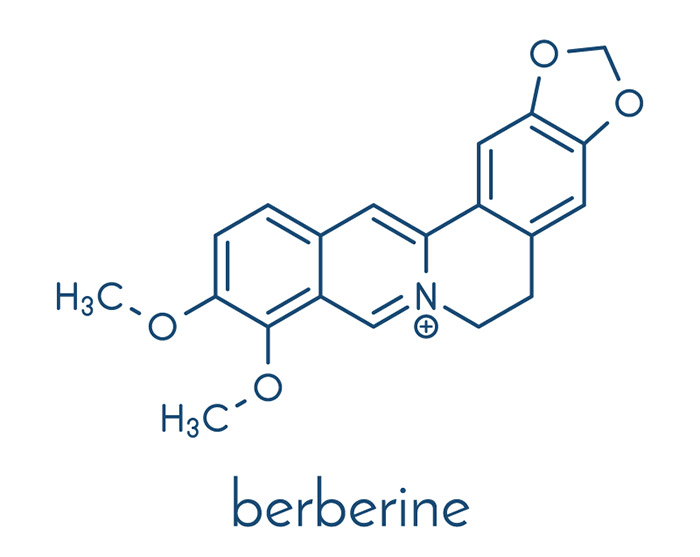
Berberine has been shown to have anti-inflammatory and anti-diabetic effects (by lowering glucose production from the liver, in a similar way that metformin works). Berberine can also improve intestinal health and lower cholesterol . . . and it may improve fatty liver disease. (REF 3)

Magnesium is involved in insulin homeostasis. In the CARDIA trial (of 4637 adult men and women), those taking magnesium showed a 31% lower risk of developing metabolic syndrome. (REF 4) Magnesium also decreases arterial inflammation (hs-CRP) and lowers the risk of dangerous arrhythmias like atrial fibrillation. (REF 5, 6) The institute of medicine recommends 400mg for men and 310mg for females. (REF 4)
Do something today for a better tomorrow!
Make an appointment now for advanced testing. We are here to help.
REFERENCES
1 – https://www.niddk.nih.gov/about-niddk/research-areas/diabetes/diabetes-prevention-program-dpp
2 – https://www.ncbi.nlm.nih.gov/pmc/articles/PMC2811436/
3 - https://www.ncbi.nlm.nih.gov/pubmed/17239709
4 - https://www.eurekalert.org/pub_releases/2005-06/k-ah062805.php
5 - https://www.ncbi.nlm.nih.gov/pubmed/16118250
6 - https://diabetes.diabetesjournals.org/content/58/4/773
7 - https://www.thelancet.com/article/S0140-6736(05)67528-9/abstract
8 - https://www.ncbi.nlm.nih.gov/pmc/articles/PMC2291341/
9 - https://www.ncbi.nlm.nih.gov/pmc/articles/PMC5644073/
10 - https://www.ncbi.nlm.nih.gov/pmc/articles/PMC5544610/
11 - https://www.diapedia.org/associated-disorders/6104476196/bladder-cancer-and-diabetes
12 - https://www.cancer.net/cancer-types/bladder-cancer/risk-factors
13 - Reaven PD, Schewenke DC, Buchanan TZ, et al. Pioglitazone reduces long-term progression of carotid atherosclerosis in IGT. American Diabetes Association 2009 Scientific Sessions; June 7, 2009; New Orleans, LA. Abstract 15-LB
14 - Yang, H. B., et. al. (2012). Pioglitazone induces regression and stabilization of coronary atherosclerotic plaques in patients with impaired glucose tolerance. Diabet Med, 29(3), 359-365
15 - Spence, J.D., et. al. (2019). Pioglitazone Therapy in Patients With Stroke and Prediabetes: A Post Hoc Analysis of the IRIS Randomized Clinical Trial. JAMA Neurology. Doi;10.1001/jamaneurol.2019.0079
16 - Cusi, K., (2016). Long-Term Pioglitazone Treatment for Patients With Nonalcoholic Steatohepatitis and Prediabetes or Type 2 Diabetes Mellitus A Randomized, Controlled Trial Long-Term Pioglitazone for Patients With NASH and Prediabetes or T2DM. Annals of Internal Medicine, N/A(N/A), doi:10.7326/M15-1774
17 - Pradhan, A. D., et. al. (2009). Effects of initiating insulin and metformin on glycemic control and inflammatory biomarkers among patients with type 2 diabetes: Than lancet randomized trial. JAMA, 302(11), 1186-1194.
18 - Preiss, D., et. al. (2013). Metformin for non-diabetic patients with coronary heart disease (the CAMERA study): a randomized controlled trial. The Lancet Diabetes & Endocrinology. doi: 10.1016/s2213-8587(13)70152-9
19 - https://www.amjmed.com/article/S0002-9343(13)00485-3/pdf
20 - https://www.ahajournals.org/doi/full/10.1161/circresaha.118.311912
21 - https://diabetes.diabetesjournals.org/content/51/suppl_3/S434
22 - https://www.ahajournals.org/doi/full/10.1161/circresaha.118.311912
23 - https://www.prnewswire.com/news-releases/semaglutide-reduced-major-cardiovascular-events-by-26-in-adults-with-type-2-diabetes-at-high-cardiovascular-risk-593658161.html
24 - https://www.evaluate.com/vantage/articles/events/conferences/ada-2019-rewind-makes-lillys-trulicity-look-average
25 - https://jamanetwork.com/journals/jamainternalmedicine/fullarticle/485256
26 - https://www.ahajournals.org/doi/pdf/10.1161/CIR.0000000000000426
27 - https://www.ahajournals.org/doi/10.1161/STROKEAHA.116.013977
28 - http://www.diabetesincontrol.com/new-evidence-suggests-pioglitazone-reduces-dementia-risk-42/
29 - Smilowitz, N. R., et. al. (2014). Circulation, 129(22), 2305-2312.
30 - https://www.ncbi.nlm.nih.gov/pubmed/17434608
31 - Scirica, B. M., et. al. Saxagliptin and Cardiovascular Outcomes in Patienst with Type 2 Diabetes Mellitus. New England Journal of Medicine, 0(0), null. doi: 10.1056/NEJMoa1307684